#ancient gaul
Text
The gods of Gaul: Introduction, or why it is so hard to find anything
As I announced, I open today a series of post covering what some can call the "Gaulish mythology": the gods and deities of Ancient Gaul. (Personal decision, I will try avoiding using the English adjective "Gaulish" because... I just do not like it. It sounds wrong. In French we have the adjectif "Gaulois" but "Gaulish"... sounds like ghoulish or garrish, no thank you. I'll use "of Gaul", much more poetic)
[EDIT: I have just found out one can use "Gallic" as a legitimate adjective in English and I am so happy because I much prefer this word to "Gaulish", so I'll be using Gallic from now on!]
If you are French, you are bound to have heard of them one way or another. Sure, we got the Greek and Roman gods coming from the South and covering up the land in temples and statues ; and sure we had some Germanic deities walking over the rivers and mountains from the North-East to leave holiday traditions and folk-beliefs... But the oldest gods of France, the true Antiquity of France, was Gaul. And then the Roman Gaul, and that's already where the problems start.
The mythology of Gaul is one of the various branches of the wide group known as Celtic mythology or Celtic gods. When it comes to Celtic deities, the most famous are those of the British Isles, due to being much more preserved (though heavily Christianized) - the gods of Ireland and the Welsh gods are typically the gods every know about when talking about Celtic deities. But there were Celts on the mainland, continental Celts - and Gaul was one of the most important group of continental Celts. So were their gods.
Then... why does nobody know anything about them?
This is what this introduction is about: how hard it actually is to reconstruct the religion of Gaul and understand its gods. Heck we can't ACTUALLY speak of a Gaulish mythology because... we have no myth! We have not preserved any full myth or complete legend from Ancient Gaul. The pantheon of Gaul is the Celtic pantheon we probably know the least about...
Why? A few reasons.
Reason number one, and the most important: We have no record of what the Gauls believed. Or almost none. Because the people of Gaul did not write their religion.
This is the biggest obstacle in the research for the gods of Gaul. It was known that the art of writing was, in the society of Gaul, an elite art that was not for the common folks and used only for very important occasions. The druids were the ones who knew how to read and write, and they kept this prerogative - it was something the upper-class (nobility, rulers) could know, but not always. Writing was considered something powerful, sacred and magical not to be used recklessly or carelessly. As a result, the culture of Gaul was a heavily oral one, and their religion and myths were preserved in an oral fashion. Resulting in a great lack of written sources comng directly from the Gallic tribes... We do have written and engraved fragments, but they are pieces of a puzzle we need to reconstruct. We have votive offerings with prayers and demands inscribed on it - and while they can give us the names of some deities, they don't explain much about them. We have sculptures and visual representations of the deities on pillars and cups and jewels and cauldrons - but they are just visuals and symbols without names. We have calendars - but again, these are just fragments. We have names and images, and we need to make sense out of it all.
To try to find the explanations behind these fragments, comparisons to other Celtic religions and mythologies are of course needed - since they are all branches of a same tree. The same way Germanic mythology can be understood by looking at the Norse one, the same way Etruscan, Greek and Roman mythologies answer each other, the mythology and religion of Gaul has echoes with the Celtic deities of the Isles (though staying quite different from each other). The other comparison needed to put things back into context is reason number 2...
Reason number two: The Romans were there.
Everybody knows that the death of Ancient Gaul was the Roman Empire. Every French student learns the date of Alesia, the battle that symbolized the Roman victory over the Gallic forces. Gaul was conquered by the Romans and became one of the most famous and important provinces of the Roman Empire: it was the Gallo-Roman era.
The Romans were FASCINATED by Gaul. Really. They couldn't stop writing about them, in either admiration or hate. As a result, since we lack direct Gallic sources, most of what we know about Ancient Gaul comes from the Romans. And you can guess why it is a problem. Some records of their religion were written in hatred - after all, they were the barbarian ennemies that Romans were fighting against and needed to dominate. As such, they contain several elements that can be put in doubt (notably numerous references to brutal and violent human sacrifices - real depictions of blood-cults, or exaggeratons and inventions to depict the gods of Gaul as demonic monstrosities?) But even the positive and admirative, or neutral, records are biased because Romans kept comparing the religion of the Gauls to their own, and using the names of Roman deities to designate the gods of Gaul...
Leading to the other big problem when studying the gods of Gaul: the Roman syncretism. The Gallo-Roman era saw a boom in the depictions and representations of the Gallic gods... But in their syncretized form, fused with and assimilated to the Roman gods. As such we have lots of representations and descriptions of the "Jupiter of Gaul", of the "Mercury of Gaul", of the "Gallic Mars" or "Gallic Minerva". But it is extremely hard to identify what was imported Roman elements, what was a pure Gallic element under a Roman name, and what was born of the fusion of Gallic and Roman traditions...
Finally, reason number three: Gaul itself had a very complicated approach to its own gods.
We know there are "pan-gallic" gods, as in gods that were respected and honored by ALL the people of Gaul, forming the cohesion of the nation. But... Gaul wasn't actually a nation. It was very much like the many city-states of Greece: Ancient Gaul was unified by common traditions, a common society, a common religion and a common language... But Gaul was a tribal area divided into tribes, clans and villages, each with their own variations on the laws, each with their own customs and each with their own spin on religion. As a result, while there are a handful of "great gods" common to all the communities of Gaul, there are hundreds and hundreds of local gods that only existed in a specific area or around a specific town ; and given there were also many local twists and spins on the "great gods", it becomes extremely hard to know which divine name is a local deity, a great-common god, a local variation on a deity, or just a common nickname shared by different deities... If you find a local god, it can be indeed a local, unique deity ; or it can be an alternate identity of a shared divine archetype ; or it can be a god we know elsewhere but that goes by a different name here.
To tell you how fragmented Gaul was: Gaul was never a unified nation with one king or ruler. The greatest and largest division you can make identifies three Gauls. Cisalpine Gaul, the Gaul located in Northern Italy, conquered by the Romans in the second century BCE, and thus known as "the Gaul in toga" for being the most Roman of the three. Then there was the "Gaul in breeches" (la Gaule en braies), which borders the Mediterranean sea, spanning between the Alps and the Pyrenean mountains, and which was conquered in the 117 BCE (becoming the province of Narbonne). And finally the "Hairy Gaul", which stayed an independant territory until Cesar conquered it. And the Hairy Gaul itself was divided into three great areas each very different from each other: the Aquitaine Gaul, located south of the Garonne ; the Celtic Gaul located between the Garonne and the Marne (became the Gaul of Lyon after the Roman conquest) ; and finally the Belgian Gaul, located between the Marne and the Rhine. And this all is the largest division you can make, not counting all the smaller clans and tribes in which each area was divided. And all offering just as many local gods or local facets of a god...
And if it wasn't hard enough: given all the sculptures and visuals depictions of the gods of Gaul are very "late" in the context of the history of Gaul... It seems that the gods of Gaul were originally "abstract" or at least not depicted in any concrete form, and that it was only in a late development, shortly before the Roman invasions, that people of Gaul decided to offer engravings and statues to their gods, alternating between humanoid and animal forms.
All of this put together explains why the gods of Gaul are so mysterious today.
177 notes
·
View notes
Text
OCkiss24 day four: lost
Philo’s stomach churned as he hiked through the misty woods of Gaul. The bare trees twisted out of the darkness like claws. A chill wind cut through his thin tunic and he shivered. He had been here before. Had almost died here before. The memories came back to him in flashes; the battle had been quick, they were caught off guard. Their enemies descended upon them out of thin air, slaughtering everyone. Vomit climbed up his throat as he saw his fellow legionaries’ glassy eyes, their entrails all over the ground. But most importantly, he had lost him.
Aurelius.
His best friend, his boyfriend, his everything.
Philo shook himself out of his thoughts, chiding himself. He didn’t know if Aurelius was dead, he could still be out there. Yes, they had to retreat before Philo could find him. Yes, getting left here meant certain death. Yes, it had been almost a year and Philo hadn’t heard from him. But that didn’t mean he was dead.
Hope. He had to have hope.
“Please,” he whispered as he walked. “Please.”
It was this dangerous, stupid, stubborn hope that led him here. Back to the scarred battleground that had taken so many people close to him.
He stepped into the small clearing where the Roman legion camp once stood. His breath hitched as he looked out over the wreckage. Still there, everything was still there. Time and the elements had taken their toll but it was all laid out before him just like the day they left. The now threadbare canvas tents ripped by slashing swords gently swaying in the breeze. The trampled fire pits, ash mixed with blood and charred leather. The bodies of his friends where they fell, now stripped of flesh and bare.
A horrible choking sound escaped him.
He couldn’t do it. He couldn’t go check. He didn’t want to know. He couldn’t. He didn’t want to know, he didn’t want to know.
He sank to his knees. Despite covering his eyes, the image of the clearing lingered.
“Aaauugh!” he wailed. “No, don’t do this! You can’t do this to me! You can’t leave me! You can’t– you can’t leave me like this!!”
He pulled at his hair as he sobbed. “G-d, G-d, please! Don’t take him from me, don’t– don’t–”
He curled in on himself, shaking as he cried. He shouldn’t have come back. He should’ve stayed in Rome and lived the rest of his life in foolish, stupid, ignorant denial.
“Philo?” a voice said.
Great, he was hearing things now. He sniffed and sat up, pulling his cloak tighter around himself. He gave a quick scan of his surroundings and did a double take. There was a figure in the clearing. A fur draped around their shoulders made their already intimidating stature bigger and outlined them against the dark trees. Their hair was crazy and wild.
“Philo!” they said again.
The figure started running at him and his whole body tensed; he was in enemy territory after all. He grabbed his bow.
The figure waved his arms. “Don’t shoot! Don’t shoot!”
Philo squinted as he knocked an arrow. Why did they look familiar?
“It’s me!” the figure shouted.
He eased up on the bow string, uncertain. “...Aurelius?”
“It’s me, it’s me!”
“Aurelius!!” He shot up, weapon forgotten, and started racing forward.
He was laughing. He was crying. He was screaming. He was flying.
He jumped into Aurelius’ arms and buried his face into the fur around his shoulders. “You’re alive, you’re alive, you’re alive!!!!”
Aurelius spun him around, half crying, half laughing.
Philo pulled back. “I thought I would never see you again!”
“No, no, I’m alive,” Aurelius said, “I’m ok.”
“You have a beard!”
“Oh, yeah, I do. I don’t really have anything to shave with so… that happened.”
“…it’s different,” Philo carefully said.
Aurelius’ face fell. “I know, I’m disgusting right now. Haven’t had the best personal hygiene in a while.”
Philo grabbed his face and roughly pulled him into a kiss. Aurelius gave a small yelp in surprise then settled into it. It was a hungry kiss, it was relieved, it was passionate. It was everything Philo had been dreaming about the last year but also not nearly enough.
When he finally pulled back, both of them gasping for air, he smiled. “I don't care about a stupid beard. You’re back and that’s all that matters. I love you so much.”
Aurelius’ eyes welled up. “I love you too. Gods, I never thought I would say that to you again.”
Philo laughed as he pulled him in again. And again. And one more time for good measure.
Finally, he came back to his senses and looked around, nervously glancing between the trees. “Is it safe to be here?”
Aurelius shrugged. “There are no Gauls here if that’s what you mean. They don’t know I’m here. Let’s go back to my camp and I’ll see if I have enough food for the two of us.”
Philo grabbed his bow and a few things that had fallen off his pack in their joyous reuniting, tucking them away. Aurelius took his hand as he led him through the chilling graveyard of memories. Philo glanced down at the skeletons but for some reason it didn’t seem as horrible with Aurelius there.
“So what have you been doing the last year?” he asked. “How did you survive?”
Aurelius let out a long breath. “You wouldn't even believe it if I told you. It has been wild.”
Philo grinned. “I don't care. Tell me everything. We have all the time in the world.”
#felix antonia#ancient rome#oc#original character#historical fiction#ockiss24#oc kiss week#ancient gaul
7 notes
·
View notes
Text
What a fantastically lucky find!
7 notes
·
View notes
Text
2 notes
·
View notes
Text
The Shieldmaiden’s Honour – Map Reveal
The Shieldmaiden’s Honour is done and dusted, ready for release. I’ve moved it a week ahead, so it’ll be available for purchase a week from now. About time, then, to show off the map created for the book.
It’s the coasts of the English Channel and the North Sea this time: the marshes of the Ikens, and the swamps of Frisia, beyond the Empire’s borders – Netherlands and Belgium, from the dunes of…

View On WordPress
#almere#amazon#ancient gaul#ancient rome#belgium#britannia#france#frisia#gaul#kindle#London#map#map reveal#netherlands#publishing#roman britain#self-publishing#shieldmaidens honour#shieldmaidens pride#song of britain
2 notes
·
View notes
Text
One of the most famous Greek depictions of a "barbarian" is the “Dying Gaul,” carved during the Hellenistic period in the 200s BCE.

This wounded soldier can be identified as a Gaul because of his metal neck ring and facial hair.

By the way, this man isn’t just naked because the Greeks often sculpted people in the buff. Gauls were famous for fighting naked — a sign of “barbarian boastfulness,” according to Dionysius of Halicarnassus.
{Buy me a coffee} {WHF} {Medium} {Looking Through the Past}
411 notes
·
View notes
Text
Ancient World Dashboard Simulator

🐢 aristotlestortoise Follow
I'm so sick of these philosophers waving dead chickens around to prove their point like that's not contributing to unnecessary food waste when children are starving in Gaul

🦷 diogenessimp Follow
and who says they didn't eat the chicken afterwards you presumptuous garum sipper
besides how would that benefit a starving child in gaul diogenes did that in athens thats like 6000 stadia away from gaul

🐢 aristotlestortoise Follow
As if donating a day-old chicken that had been used as a prop isn't a hazard for food poisoning or something geez
How about you bring in a live chicken and demonstrate your point with that and then donate it to a godsdamned farmer who can do something with it

🦷 diogenessimp Follow
look neither of us understands diogenes whole school of thought as well as he does and if he thinks using poultry for props is the best choice then imma trust he knows what he's talking about

🦣 giantwoolybones
do you guys know that you are arguing about a dead chicken
24,874 notes

👨👦 corophilus

not to be an art critic on main or anything but has this sculptor ever heard of a dynamic pose
#a boy this age would be moving!!
3 Notes

✊ p-o-p-u-l-a-r-i-s Follow
The people just don't seem to care about how Caligula keeps beginning new construction projects with public funds. People are homeless and starving and he puts up a new theater in the middle of the city as if we need that.
Now he's claiming to be a god?? Plus there's rumors he has sex with his horse.
It's very important that you contact the members of the senate to let them know the people are ready to rise up if they don't depose Caligula. We should get organized and flood the streets.

🎽 crixusstan
I see you not reblogging this. Come on, this should have 200k notes
14,381 Notes

💸 achaemenid Follow
Dude, this invention of the coin is so iconic. Cyrus is gonna go down in history for this one. I mean that in a good way.

🪙 lydianmetallurgy Follow
Sorry but Cyrus stole the entire concept of the coin from us and I'm sick of people acting like we didn't have contributions to make to advancements in science and culture just because we were conquered by your stupid empire. Cyrus is a tyrant and just wants to gather as much power as he can.

🦁 daniyye
Cyrus let my people go back to our homeland, so he's all right by me
#by the rivers of Babylon we sat and wept when we remembered Zion #now we don't have to do that anymore!!
18 Notes

🥇 gladiatorheadtohead Follow
Remember, you're voting for who you think would win the fight, not who you like the best.
24 Notes

🐺 lyca
just left my den and there's just 2 human babies lying on the ground all alone
wtf do i do

🐺 lyca
so i happen to already be lactating so i guess... i just have 2 more cubs now?

🐺 lyca
guys these babies are so cute. i think they're going to do great things one day
#personal #do not reblog i mean it this time
6 Notes

🍆 miletus-leather Follow

The best sex toy shop in Miletus. Come see our selection!

🦌 artemisbow Follow
I'm not one to harsh on a small business trying to make it but I've been to this shop and women are an afterthought here. You'd think the only people interested in dildos were men the way they act here.

🍆 miletus-leather Follow
Women should be weaving and taking care of their children, not coming into our sex shop.

😈 hermescock Follow
K

🐐 blessedsatir
U
64 Notes
#dash simulator#dashboard simulator#ancient rome#classical rome#ancient greece#classical greece#ancient persia#ancient israel#ancient lydia#bonus since i know you want to know gaul was 13000 stadia from athens
424 notes
·
View notes
Text

Titus Manlius Torquatus decides the fate of Rome in single combat against a Gallic warrior.
#medieval#art#middle ages#miniature#manuscript#france#ancient rome#titus manlius torquatus#gaul#gallic#warrior#roman#combat#duel#knight#knights#europe#european#history#rome#french#roman republic#gauls#anio river#ponte salario#italy#château de chantilly#jousting#joust#lance
122 notes
·
View notes
Text
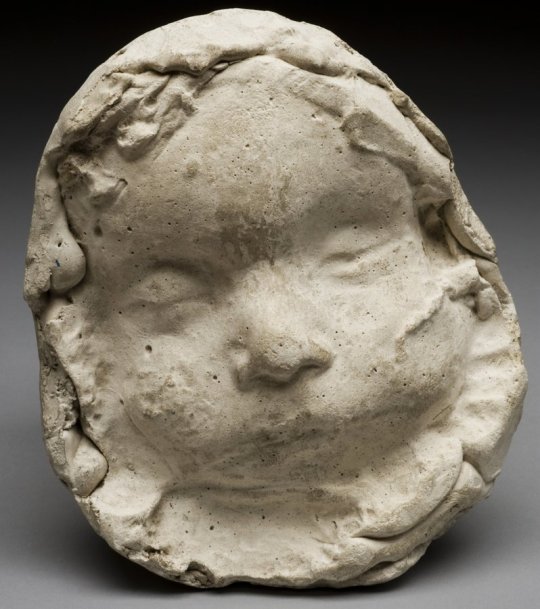
Plaster cast of the face of an infant who was buried in Lutenia (modern-day Paris) around 200 CE. The mask was probably created accidentally when cement leaked into the sarcophagus.
150 notes
·
View notes
Text

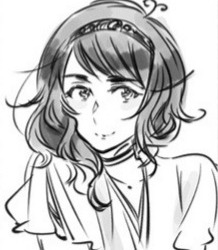


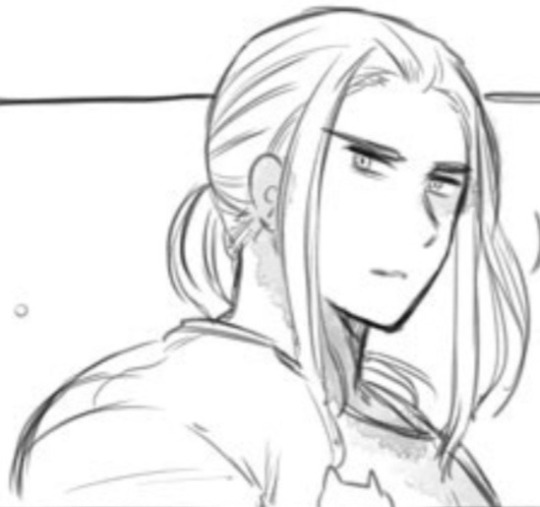
We need more chapters dedicated to the Ancients + all of them interacting with modern day nations
#and many others like Gaul / Iberia / Britannia / etc.#hws ancient rome#hws ancient greece#hws ancient egypt#hws persia#hws germania#hws ancients#hetalia#hetalia world stars#hws
113 notes
·
View notes
Text
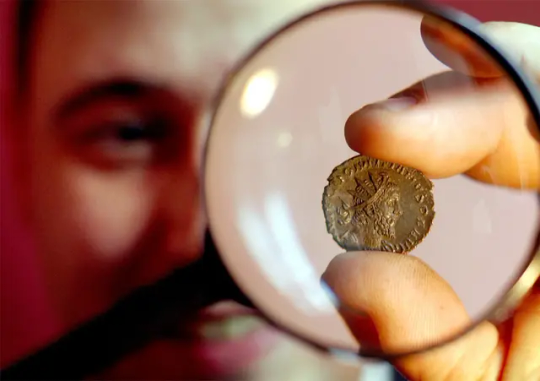
Coin reveals little-known Roman ruler
Treasure hunters have unearthed a coin bearing the head of a virtually unknown Roman ruler who briefly held power in Gaul around A.D. 270 as the empire teetered.
It is only the second coin ever found showing the head of Domitianus, who seized power — and the mint — in the breakaway Gallic Empire, which included modern England, France and parts of Germany and lasted for 15 turbulent years.
“We know next to nothing about Domitianus, except that he was ‘punished’ by the Roman Emperor Aurelian for treason,” Richard Abdy, curator of Roman coins at the British Museum, told Reuters. “But at least now we know what he looked like.”
Studied by coin experts
The first coin bearing Domitianus’ head was found in the Loire area of France in 1900, dismissed as a fake because his name was unknown and then lost from sight in a small museum in Nantes until very recently.
“It is now being studied by numismatists. When I showed our coin to the woman who has been working on it she jumped for joy because it bore out everything she had said about hers,” Abdy said, noting the French coin had been dated to A.D. 271.
The Gallic Empire was established in 260, when rule from Rome was weakening, by Postumus. He was succeeded nine years later by Marius, who held the throne for a matter of weeks before being strangled and in turn replaced by Victorinus, who ruled until 271 when he too was murdered.
Domitianus is believed to have murdered Victorinus, who had a habit of raping the wives of his subordinates, before himself being ousted by Tetricus. Tetricus ruled from 271 to 274, when he was defeated by Aurelian and the empire was restored.
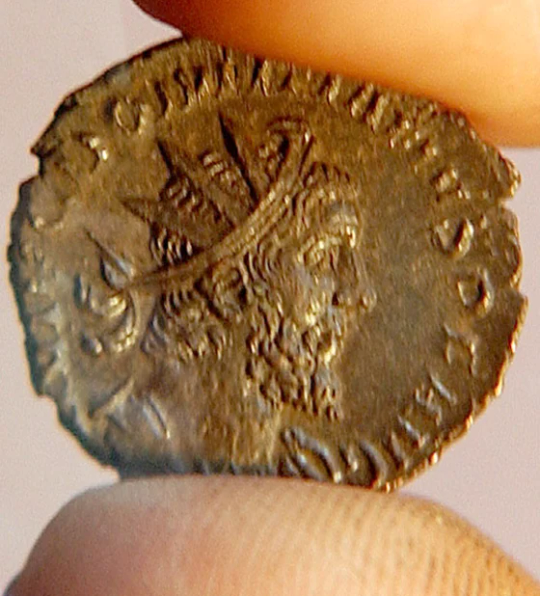
Found on farmland
The British coin, which goes on show at the British Museum starting Wednesday, was found on farmland near Oxford just under a year ago as part of a hoard of 5,000 Roman coins fused together in an earthenware pot.
“It is a type of coin we know as a ‘radiant’ because there are rays radiating from his head. It is a two-denarii piece, which at that time, when they were coining money as fast as they could, would have been worth a couple of hours’ work,” Abdy said.
The base metal coin, which originally had a surface coating of silver, is now conservatively estimated to be worth a five-figure sum, Abdy said.
At the time it was minted, the once-mighty Roman Empire was undergoing a period of intense flux.
The years between 270 and 285 were marked by chaos in the empire, with more than 20 different emperors and 30 different pretenders fighting for power. Only one of these leaders died a natural death.
By Jeremy Lovell.
Original posted Feb. 24, 2004.
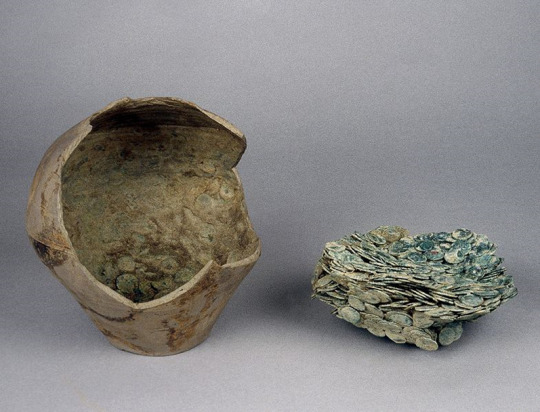

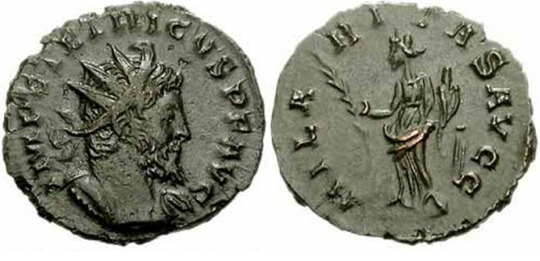
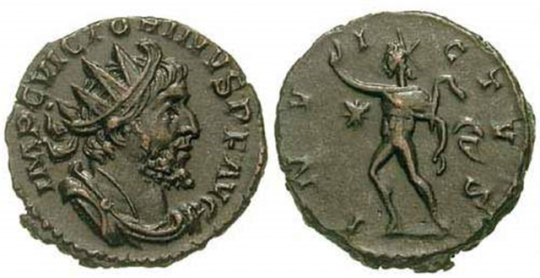
The Coin Hoard
Until this discovery was made some scholars doubted the historical significance of Domitianus who is named just twice in the historical sources. The Oxfordshire coin provides archaeological evidence suggesting that he successfully proclaimed himself emperor of a breakaway part of the Roman Empire during the reign of Aurelian (AD 270-5).
Richard Abdy (Curator of Roman coins at the British Museum) said that ‘during the 270s AD the fabric of the Roman Empire had become strained. Breakaway empires, like the so-called ‘Gallic Empire’ that included Britain, were established and ruled by a succession of rebel emperors. Finding a coin produced in the name of Domitianus means that he should now be recognised as one such rebel emperor.’
The failure of Roman writers to identify him as a rebel emperor even led the only other coin of Domitianus – found in France in 1900 – to be dismissed as a modern fake. The new discovery was struck from the same dies that were used to produce this earlier find and has therefore put its authenticity beyond any doubt.
Ian Leins (Finds Adviser, Iron Age and Roman coins, Portable Antiquities Scheme) said ‘the portrait on the new coin very closely resembles that of the rebel emperors Victorinus and Tetricus. It is highly possible that other coins of Domitianus exist in the collections of museums and individuals but have escaped detection. It is important that people start to pay more attention to these often neglected finds and record them with their local Finds Liaison Officer.’
#Coin reveals little-known Roman ruler#coins#collectable coins#roman coins#rebel emperor#Domitianus#Gaul#Gallic Empire#Aurelian#ancient artifacts#archeology#archeolgst#history#history news#ancient history#ancient culture#ancient civilizations#roman history#roman empire#roman emperor
61 notes
·
View notes
Text
The gods of Gaul: Cernunnos
Cernunnos is without a doubt one of the most famous gods of Ancient Gaul, and yet he is actually one of the most mysterious Gallic deities. Sure, he definitively marked the imagination of people - I mean he was literaly used as the basis for the Wiccan Horned God, and you will see lots of Cernunnos-copycats in fantasy RPGs and the like. But... we actually do not know the truth about this god, and despite everybody on the Internet trying to make it sound like we have an easy and simple summary of what he is, we only have strong theories and conflicting hypothesis.
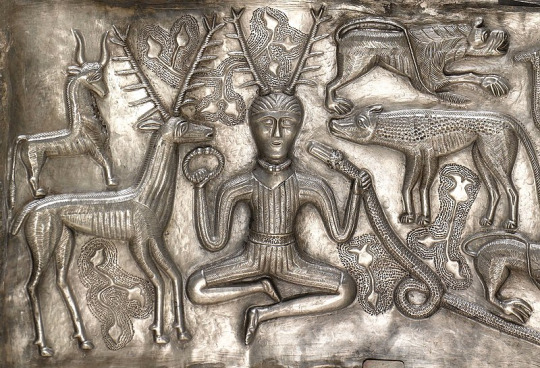
I/ What we actually have
As with a lot of Gallic gods, Cernunnos exists not in legends or myths, but through a name and a visual. The name Cernunnos is found three times all on its own in Gallic documents. One was a Greek inscription from Montagnac that only says "This is dedicated to Karnonos of Alisontia". The other two are identical inscriptions found in Luxemburg (near Steinsel), votive inscriptions of wish-offerings merely saying "Deo Ceruninco". There is actually a fourth inscripton of the name Cernunnos - and it is from this one that we get the spelling we use today - but it is a special one. Unlike the other three, this one has a picture alongside it identifying the god visually. It is the famous "pilier des Nautes" found under Notre-Dame-de-Paris, the "pillar of the Nautes", the "pillar of Boatmen", considered one of the most important Gallic monuments (because it depicts a set of divine portraits with their names explicitely spelled out).
It is only thanks to this pillar that we know today that the many depictions of a male horned god found across Gallic art are meant to be Cernunnos. There are too many visual depictions of him to be listed here (sixty or so were found by archeologists), but among the most famous is the one I put a picture of above: the Cernunnos of the Gundestrup cauldron found in Denmark.
Here is what Cernunnos looks like on the pilier des Nautes:
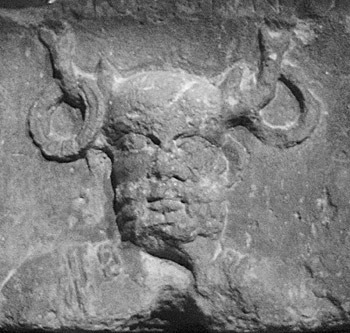
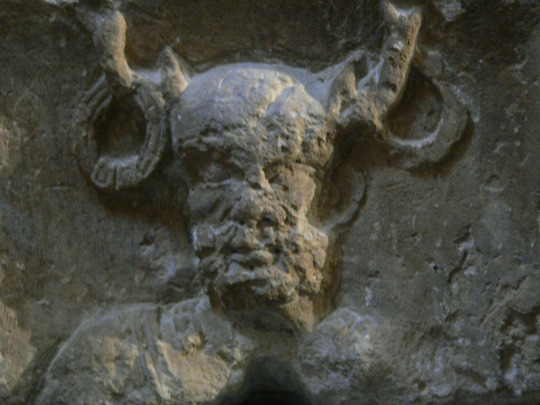

So, we have a name and a bunch of pictures. Let's try to break it all down.
When it comes to the name, Cernunnos/Karnonos, it is commonly agreed by etymologists and those that studied the Gallic language that it means "the horned god". "Carnon/Karnon/Karn" was known to mean "horn", both in the sense of animal's horn and a blowing instrument - it was tied to the Gallic tribes known as the Carni and Carnutes, and to the Celtic carnyx. The "kern" part is also considered to be equivalent to the Old Irish "cern", which was associated with horned beasts. Some have pointed out that if the "Cern" of "Cernunnos" means horn, the "unnos" could be a suffix meaning "beautifully" - so instead of Cernunnos being the "horned god" or the "horned one" it would mean "He who is beautifully horned" or "He with beautiful horns". But all in all, his name stays connected to horns.
[But is it truly his name? This is another debate typical with the gods of Gaul: we do not know the differences between the proper names, the titles and the nicknames. It could be (to take a Greek comparison) like Hestia's case, where he names literaly means "hearth" but is a proper name ; or it could be like the "Old Man of the Sea" which was a generic nickname for a whole group of sea deities.
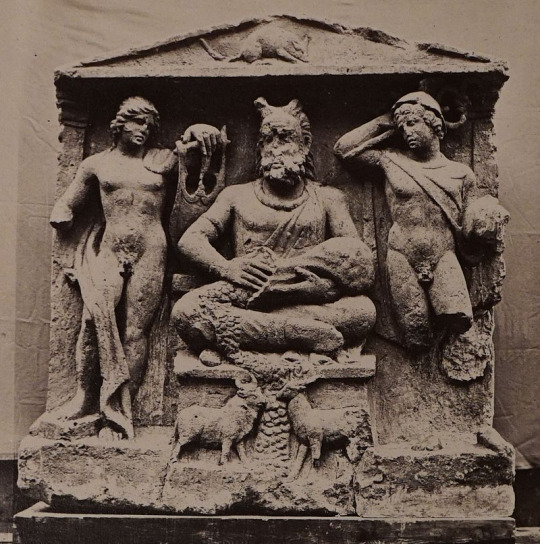
Now let's talk about the images of the god. Thanks to having so many depictions of him, we can identify recurring traits that define his visual.
Cernunnos always appears with his legs crossed, in a position (the "lotus" or "yoga positon" to take Asian terminology) that is considered, depending on the sources, either "very unusual for a god of Gaul", either "absolutely typical of Celtic representations of gods, warriors and heroes"... Well, he is almost always in the "lotus position" - in rare cases, he can be standing up. Cernunnos is also always wearing a torc, the traditional Gallic ornament, though he isn't always wearing it around his neck as one would expect: sometimes he holds it in his hands, other time it hangs from his antlers. Speaking of antlers: as we said, Cernunnos is a horned god, and he is usually depicted with antlers. But sometimes, more rarely, he rather sports goat horns - maybe it is a Romanization effect, as he got confused with Pan?
Cernunnos is always a male figure, though his actual age is unclear. Sometimes he is a mature and bearded man, but we also have "ephebe" depictions of him as a beardless youth - that some researchers even go as far as to describe as "child-like". Similarly, he keeps oscilatting between being a singular entity, and a triple-god with three heads or three faces. The disposition of the three faces can be really weird and freaky - for example, he can have a regular human head, and two small human faces growing from either side of his neck, or from the top of his head.
He usually always has a bag or basket with him, a bag that he eithers opens or that is simply sitting before him, spilling its content: sometimes the bag is filled with food, other times with coins, and other tims yet with grain. Cernunnos is usually sitting in the middle of a trio (as in two other humaoid or divine figures are by his side), or he is surrounded by various animals - which he can be seen holding with one hand, or petting near his lap. There are various animals he is associated with - we have seen him with stags, with bulls, with rats, with dogs, with lions, with goats... He is most notorious for being often depicted with the symbolic-mythical beast of Gaul known as the cryocephal snake: a ram-headed snake, whose exact meaning is still unclear to this day. However, Cernunnos seems to really like them: sometmes they just sit side by side, sometims he holds it by the throat, sometimes he feeds it, and other times two of them sit on his lap.

(This depiction above lacks any horns, but there are two holes at the top of the head implying that the horns were a different part of the statue added separately - which is very interesting in the theory of Cernunnos having antlers that "fall")
One of the problems with the Cernunnos visuals is that it is not clear where they stop, as we got a wide range of variations between the animal and the man. For example, there are strong theories according to which Cernunnos appears on the Strettweg chariot, as the tiny deer with oversized antlers that two men are holding (which would mean Cernunnos could be depicted as a full stag without human traits):
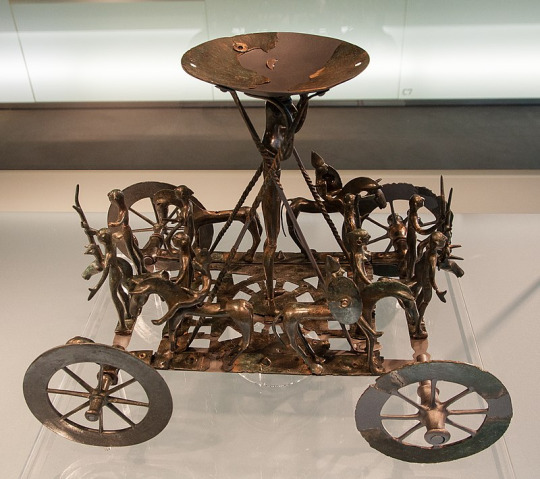
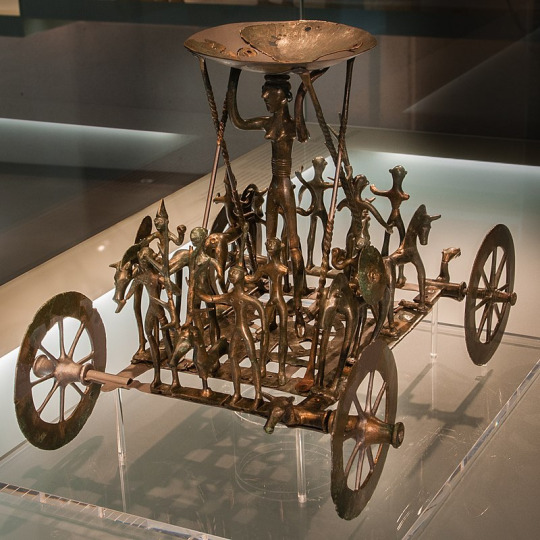
And on the opposite spectrum, a Gallo-Roman statue was found in Amiens of a fully human deity... except for one deer ear on the side of his face. One of the theories to explain this bizarre statue of the first century claims that it is an hyper-Romanized depiction of Cernunnos - though other theories do exist (for example, when the statue was discovered, it was originally believed to depict Midas, with a variation of the "donkey ear" punishment):

And you also have in Bouray a cross-legged god with deer legs rather than antlers or ears:


Given how "late" the visual depictions of the gods of Gaul was, and how the Romanization of Gaul strongly encouraged and favorized the depiction of deities as humanoids (to fit with the Greco-Roman deities), it is very likely that Cernunnos started as a divine stag, as fully animal, and then slowly, especially under the Roman influence, became more and more humanized... (There's also a fascinating case of antlered-goddesses at Clermont-Ferrand and Besançon, but that's for later).
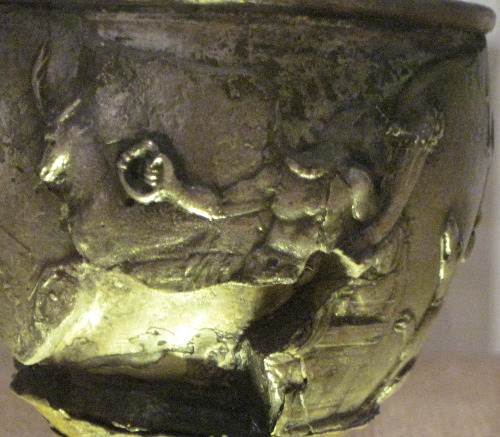
II/ Some theories
Now that we have the name and the visuals done... What's Cernunnos deal? Again remember we can only make theories based on these fragments and their context - but we do not know for certain if it is the truth.
A: It is agreed that Cernunnos is a nature god, and a god of abundance. The fact he is half-stag, and usually depicted with animals, and even holding them in a gesture of domination or use, shows that he is a fauna god, which prompted some researchers to identify him as one of the avatars of the "Lord of Animals, Master of Wild Things" archetype of Indo-European myths. But more importantly we are certain that he dealt with abundance and prosperity - thanks to him always having a big bag of grain, food or money. He was very clearly a god of riches and wealth - be them natural (grain, food) or manufactured (coins). Some have highlighted the idea that this tied to the symbolism of "forests that have big strong stags in them are bound to be fertile places filled with resources". Cernunnos' ties to abundance cannot be denied because in some Classicized depictions of him (such as the silver goblet above), he is literaly seen holding a cornucopia, aka a horn of abundance.
Some people even want to push the domain further by thinking Cernunnos might have been a god of sexual and reproductive fertility - but this is not based on any visual or religious clue. Rather this theory ties on the European symbolism of the stag as a symbol of virility and reproductive prowess, so it is a purely contextual reading, to be handled carefully. We are only truly certain that Cernunnos offered lots of money, lots of grain, lots of food, and lots of animals (him being surrounded by animals might be an extension of the "I offer you this bag of grain" visual, since animals were hunted down for food, so he isn't just a god of good crops and economic riches, but also one that ensures a plentiful hunt).
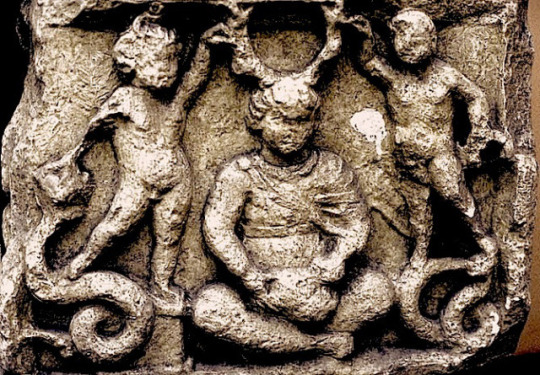
B: There is a strong theory going around that Cernunnos might be a seasonal god, or a deity of the seasonal cycle. This idea comes from various elements pieced together - and which added with the A theory above, would make this go a sort of "Father Nature" figure. It all starts wth the European symbolism of the antlers and the stag in general: given the antlers fall and grow with the turn of the seasons, the stag has been used heavily in Europe as a way to measure the year or symbolize seasons. Some researchers theorized, based on how the size of Cernunnos antlers changes through depictions, and on how he is sometimes a beardless youth sometimes a bearded mature man, that Cernunnos, like the stag, had a seasonal cycle. For some he just loses and grows back his antlers (there is a Cernunnos depiction at Meaux with what seems to be the stubs growing back after antlers fall, which would support this theory), but others push it further by claiming the god died and was reborn each year with winter/spring - an idea inspired by the Indo-European archetype of the dying/sacrifical vegetation god.
There is a specific depiction of Cernunnos that ties into this whole - and I will have to trust Yann Brekilen's word for this, as I couldn't find any picture of the engravings he described. According to him, on the Gallo-Roman Germanicus Arch/Arc, by Saintes, there is a dual depiction of Cernunnos. On one side of the Arch, he is part of a trio: he is sitting crossed-leg with antlers on his head, but naked (usually Cernunnos s clothed in some ways). By his side there is a man armed with a club/mace (which might be tied to the "god with the mace", we'll see that in later posts), and a woman holding a cornucopia. Now, that's on one side of the monument - but on the opposite side, the scene is reproduced... with both the armed man and the antlers of Cernunnos missing, only leaving a regular cross-legged naked man, and the cornucopia-woman. Speaking of this cornucopia-woman: there are repeated talks and interpretations of any female figure by Cernunnos' side to be a "Mother-Goddess" or Earth-Goddess supposed to be the wife/companion/lover of Cernunnos. This is all part of an effort to make Cernunnos a "father-god" (which makes sense in some ways), and it ties into the whole reading of his myth as being a seasonal cycle (the god dying and resurrecting after impregnating his female counterpart ; something the Wiccan mythology for example reused in their beliefs), but... If you ask me, I am not really convinced? A lot of people insist on there being a "Mother Goddess" clearly by Cernunnos' side, but sometimes you see these people reinterpret a lot of the visuals, and it is not obvious that the female figure is with him (Cernunnos is usually surrounded by male figures rather than female ones). Plus, we know the Mother Goddess of Gaul tended to come in three (the famous Matronae) so... I am a bit doubtful of that, but that's just me and because of a lack of convincing evidence.
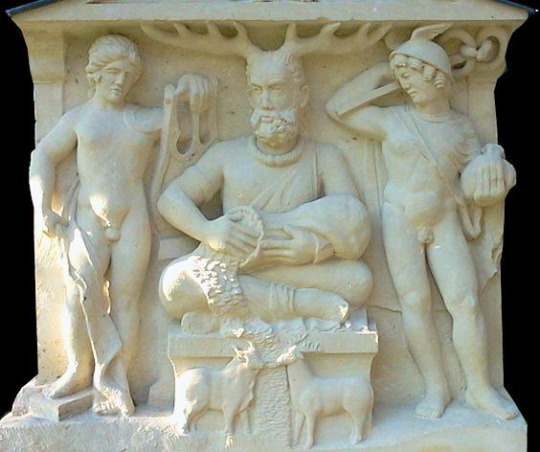
III/ Comparisons and equivalences
As I said in my introduction post, a lot of what we know about the Gallic gods comes from the syncretism the Romans operated with their own deities. And with Cernunnos it is... complicated. Because we do not know exactly who was the Roman equivalent of Cernunnos (since the Romans did not speak of him), and based on researches we have two likely candidates. It is very possible Cernunnos might have been split into those two Roman deities, or at least that his attributes led him to be interpreted as two deities mixed in one.
On one side, there is a very strong and popular theory that Cerunnos was the god Cesar, in his description of the religion of Gaul, called the "Dis Pater". "Dis Pater" was the Latin god that was equated and synthesized with the Greek Hades under the share nickname "Pluto", "the rich one". This was because Dis Pater was not originally a god of the dead in the old Italian religion - he was an underground god, indeed, but a chthonic god of riches and wealth, an earth-god of fertility (his very name meant "Rich Father"). This is what tied him to Hades, the richest of the Greek gods - and made him the new god of the underworld and the dead, Pluto. So, equating Dis Pater with Cernunnos makes sense as we do know that both deities were strongly associated with an earthly form of fertility: Cernunnos, just like Dis Pater, brought grain and earth-grown fruit, as well as precious metal (in the form of coins). Not only that, but Cernunnos was strongly associated with the ram-headed snake, and while we don't know much about this mythical being (typically a companion of male gods in Gallic art), it seems to have been a chthonian symbol, and perhaps even a form of guardian of the world of the dead (or a guardian of underground riches cousin of the dragons of legends). This is what led many to interpret Cernunnos as a chthonian deity, perhaps even an afterlife deity - a tradition that seems to have been in early Christian art, where Cernunnos was often associated with the "mouth of Hell" or the "entrance to Hades" (like the 9th century manuscript Stuttsgart Psalter, which illustrates Cernunnos in a depiction of the Christ descending into Limbo.
If Cernunnos is indeed Cesar's Dis Pater, then it would be extremely interesting, because Cesar wrote in his records that the peopleof Gaul believed Dis Pater to be their divine ancestor, and the "father of their race". Aka, the Gallic Dis Pater is meant to be an All-Father, the first ancestor of the Gallic tribes, and the origin of the human race (or at least of the people of Gaul). If Cernunnos is this Dis Pater, it would confirm his role as a "Father-God" and his links to a potential "Mother-Goddess". (It could also explain why he so persistantly wears a torc, as an emblem of the civilization and traditions of Gaul) If Cernunnos is also the Dis Pater, it would give him a role as a nocturnal god, since Cesar resumed in his texts (or rather "recaped" since he was doing a report based on Posidonius own records) that it was because the people of Gaul descended from Dis Pater that the druids measured the time not in "days" but in "nights"...
The other very likely candidate for the Romanized Cernunnos is the one we call the "Gallic Mercury". We know that Mercury was one of the most popular and widespread gods of Gallo-Roman gaul. Cesar did mention him as one of the most important gods venerated by the Gallic tribes before the omans arrive (though this would contadict the is Pater theory, since Cesar identifies Dis Pater and Mercury as two different deities in the Gallic beliefs). Still, Mercury was a god of commerce and riches before all - even more so than his Greek counterpart Hermes - so it makes sense that he would be present in the Gaul province of the Empire, which was big heart of commerce. And where Mercury has a pouch of coins, Cernunnos has a full bag of them... And in several Gallo-Romans depictions one of the two gods that surround Cernunnos is very obviously Mercury... [Several of the images in this post are of the altar of Reims, which depicts Cernunnos surrounded by Apollo on one side and Mercury on the other] And Cernunnos' presence on the Pillar of Boatmen implies he was tied to the fluvial sailors, and to the fluvial commerce and travels... And in Luxembourg we have Gallic depictions of stags vomitting coins, again insisting on how the stag was associated with riches... Even if you take Cernunnos as a chtonian god or death god, it ties to Mercury's role as a psychopomp inherited from Hermes ; and Mercury's presence by Cernunnos side on the altar of Reims for example makes sense if you consider one of the deities Cernunnos was conflated with was Pan (hence the goat horns) - aka, the son of Hermes... Everything is tied together into one big convoluted web of inter-mythologies.

And when it comes to comparisons to other Celtic mythologies, things are a bit... In French we say "vaseux" - basically there were parallels drawn between Cernunnos and Celtic figures of the Isles, but they rely on very meager if not unstable links. For example some have tried to identify the Cernunnos of Gaul with the Irish figure of Nemed (interpreted as a "stag-god" leading "stag-people" or "deer-people"), and in return the battle between Nemed and Balor for the land of Ireland was projected onto the scene depicted on the Arch that I described prior - a battle between the horned god and the god with the mace for the "earth-mother", the cornucopia woman, the land-goddess. The acceptance of this scene between the horned god and the mace god as a battle for the mother-goddess (which, I insist, was not PROVEN in any way and is completely hypothetic and theorized with no definitive proof - maybe the mace god is here to sacrifice the horned god for the cornucopia-woman, or maybe he is just here to cut off his antlers, or maybe the cornucopia woma cheats on Cernunnos wit the mace god, we cannot know), also led to vague comparisons being drawn to the story of Pwyll and Arawn and how they exchange each other's identities, but we are really in a stretch here.
More interestingly there is a Welsh comparison that could indicate a leftover of a Christianized Cernunnos in an Arthurian setting: the Owein tale (Mabinogi): Kynon, a knight of King Arthur's court, describes how in his youth he had to encounter an ugly knight clad in a black armor who had the information he needed to find his enemy. The knight lived by a "fountain" (a water stream) surrounded by wild and ferocious animals - and to give Kynon the information he needed, the ugly black knight struck a stag nearby, and the animal lowers its head in the direction Kynon must follow. It is very plausible that this supernatural knight who hits an informative stag and who lives surrounded by wild animals is a form of Christian censorship or caricature of a Cernunnos figure, going from a wise and benevolent stag-god to an ugly evil knight who abuses animals, and who has his duality human/beast split between the knight and the stag.
There were also tenuous elements that made people consider the Irish Conall Cernach (known for being one of the sidekicks of Cuchulainn) as a diluted version of Cernunnos as a "Master of Beasts" - more precisely an episode in "The Cattle Raid on Fraech" where instead of killing a monstrous snake, Conall somehow tames it and wears it as a belt, has been compared to Cernunnos' handling of snakes and ram-headed snakes. And don't even get me started on the many, MANY saints of Catholicism that are supposed to be leftovers or reinventions of Cernunnos (saint Ciaran of Saighir, because he tamed wild beasts including a stag ; or the saints of Bretagne Edern and Théleau both supposed to ride a stag instead of a horse...).
The complicated thing (well ONE of the complicated things) with Cernunnos is that he is tied to the stag, and the stag was one of the most prominent smbols and images of the medieval and proto-medieval imagery in Western Europe. You had lot of old mythology stuff that survived in modern days, but you also had lots of medieval symbolism and images (like how the flying stag was one of the symbols of the king of France), and a HUGE re-use of the stag by Christianity in various forms (from the antlers falling being used as a symbol of the Resurrection, to the hunt for the white otherwordly stag of Celtic myths suddenly becoming a hunt for Christ incarnate when a glowing cross appears above the stag's head...). As such it is hard to pin-point what the Gauls truly believed the stag meant, versus the stag symbolism that arose in the Middle-Ages.
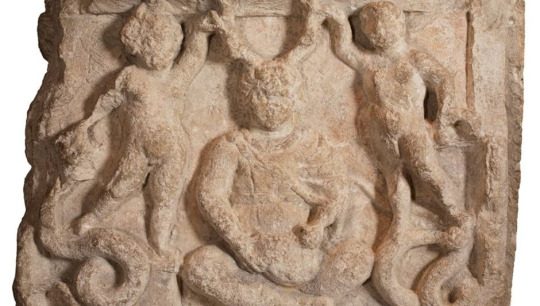
To conclude this post, while I said I had my doubts with systematic identifications of Cernunnos as a companion of a Mother-Goddess, I want to briefly return about a fascinating trivia of Gallic researches: the existence of a female version of Cernunnos, a "Cernunna" we could jokingly say.
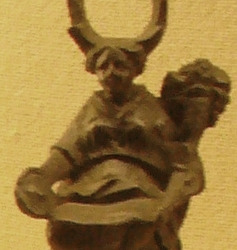
Little figurines and statues were found of a horned goddess - sometimes with antlers! - in both the area of Clermont-Ferrand (which was the domain of the Avernes folk) and around Besançon (the Séquane folk). Who were these goddesses? Local variations of Cernunnos? Sisters, daughters or wives of the god? Or completely unrelated deities? Were they one or several (some are more matronly, motherly figures such as the one with antlers above, others have Venus-like poses unveiling their breast and legs such as the bull-horned below)?
We will probably never know - but while they can be incarnations of this famed "Mother-Goddess" companion of Cernunnos everybody speaks about (and links to the importation of the cults of Demeter and Cybele in Gaul), it is VERY likely these statues date from the Gallo-Roman era and from a Romanized version of the Gallic religion. Indeed, they are all tied by their attributes - they hold a cornucopia, and a "patère" (sacred vase for religious libations). Attributes present in very Romanized Gallic goddesses (such as Rosmerta), but also in typical Roman deities (mainly the lares). Add to that how the adjunction of a male attribute (the stag antlers or bull horns) to a female figure is VERY unusual for Gallic depictions (where the genders are neatly split), while the divine androgyny was a feature of Greco-Roman mythology (the effeminate Apollo and Dionysos, the masculine goddesses Athena and Artemis, the mythical Hermaphrodite...), and it is very likely these statues of the "Cernunna" are the result of the Roman religion "breeding" with the Gallic beliefs...
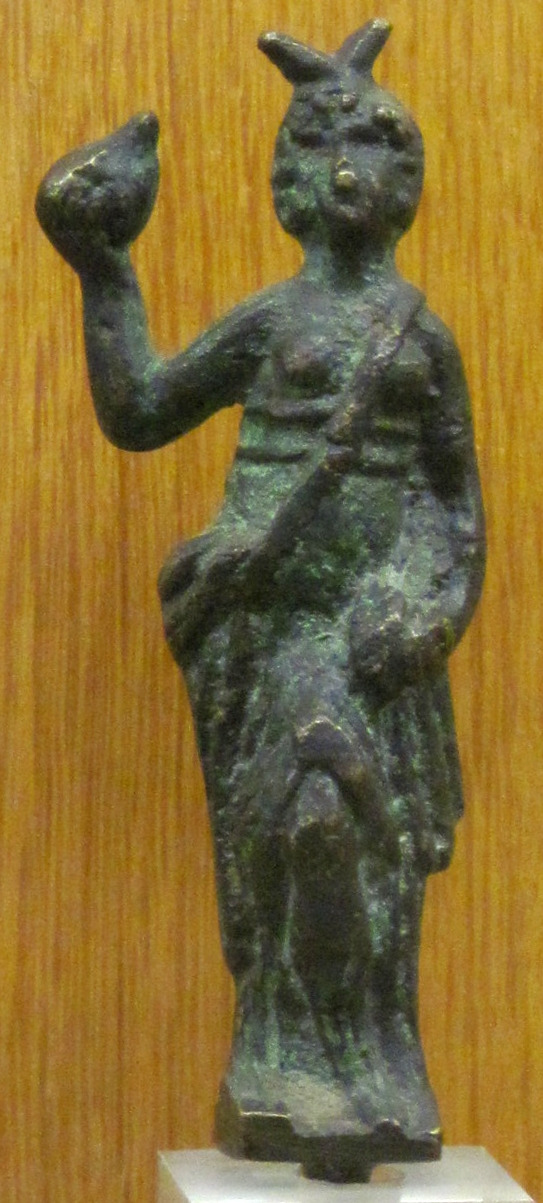
#gods of gaul#gallic mythology#cernunnos#ancient gaul#religion of gaul#gallic religion#gallic gods#gallic goddesses
126 notes
·
View notes
Text
OCkiss24 day six: reach
Felix didn’t know what to do.
Everywhere she looked, there was more destruction. Set animals with their long biforked tails ran through the Gaul refugee camp, trampling everything in their path. They slashed through the canvas tents and stuck their long pointed snouts inside, ripping the flesh off the people taking shelter there. Most of the people here were displaced civilians and Felix watched in horror as families were chased through the wreckage of the camp. A man tripped and the Set animals descended upon him like wolves. A lady desperately hung onto a branch of a tree and they jumped up, grabbing her dress in their teeth and trying to pull her down. The air was filled with the crying of lost children and screaming of the unfortunate.
There was some resistance though. To her left, Aurelius and Marcellus, the centurion of their legion, were fighting back to back, swords cutting through the vile black beasts. To her right, Philo was firing shot after shot from his bow, trying to pick off the creatures that had cornered people. A few of the refugees were Gaul soldiers; they had their long swords out and were helping to push the creatures back but even so their little band was sorely outnumbered against the creatures.
And in the middle of it all was Anipe. But it wasn’t really her, was it? Her eyes had rolled back in her head during dinner a half hour ago and she dropped her food with a clatter. Her body had seized up, her back arching, and a deep voice that was not hers boomed out declaring itself Set, the god of chaos and destruction, come to rule the world. She had raised her hand and that had been the start of it, the first horrid Set animals forming out of the ground.
Now she stood in the middle of the battle, white dress stained with blood, cackling and clapping her hands at the bloodshed like it was her favorite performance. A faint red glow exuded out of her.
Felix’s eyes narrowed. “SET!”
Anipe turned to her with a blank expression.
“Leave these people alone!” Felix commanded. “They did no wrong!”
“It’s not a question of right or wrong,” Set said dismissively, “it’s a matter of who’s in my way. These people aren’t stopping me, no, but you are and they’ll follow you anywhere. And for that… you, all your friends, and followers must die.”
Felix charged with a yell, sword at the ready.
Set just stood there with a wicked grin.
Felix raised her sword above her head, ready to bring it down into Set’s collar bone when suddenly Anipe stumbled. She looked up with fearful eyes. “F-Felix?”
Felix froze, her lover’s plea for help catching her off guard. In that split second hesitation, Anipe’s eyes rolled back again and Set slammed a fist into Felix’s stomach. She went flying back and landed with a sickening crunch. She weakly grabbed her ribs and a flash of pain went through her.
Set laughed, a mocking condescending sound, as he walked towards her. “This is why you’re weak, Opto. For all your fancy fighting skills, you’re still a slave to your heart. You’ll never be able to stop me as long as you hold yourself back like this.”
Felix groaned, forcing herself to her feet.
Set raised another hand and a red ball of glowing light formed in his palm. Felix closed her eyes, bracing for the worst.
But nothing happened.
Felix cracked an eye open. Where the red had once been, the ball of light now glowed a light blue, the color of Anipe’s magic. Her face was screwed up in concentration; sweat beaded up on her forehead.
“Anipe?” Felix croaked.
Anipe’s eyes flicked up to her. “It’s so loud in my head. I can’t hold him off much longer.”
As if on cue, her eyes turned red again and Set shook his head to clear it.
“Stupid Thoth,” he cursed, “trying to push me out of his avatar. Giving her his power as if she didn’t want this. It’s not my fault she asked me to do this.”
“You liar,” Felix spat. “You stupid fucking liar!”
“Oh, did you not know?” Set feigned concern, putting a hand over his mouth. “Your beloved Pharaoh Anipe here asked me to use her body as a vessel. She’s the one who freed me from the old scrolls, blinded by Thoth’s pointless pursuit of knowledge. Don’t believe me? Ask her yourself.”
Anipe stumbled forward, falling into Felix’s arms. She trembled like a leaf as she looked up at her. “I– it’s true, I did. I’m sorry, I’m so sorry. I didn’t know this would happen. Kill me, please kill me. I don’t want any more innocent people to die. Stop him, please.”
Felix’s mouth turned dry.
Suddenly, Anipe’s eyes rolled back again but this time turned blue. The voice of Thoth, god of knowledge, rang out across the battlefield. “YOU WILL DO NO SUCH THING. AS MY AVATAR ANIPE IS UNDER MY PROTECTION AND THERE IS NO NEED FOR SUCH EXTREME LENGTHS. EVEN NOW, WITH EVERY SECOND HE DOES NOT POSSESS HER, SET’S POWER GROWS WEAKER. WE ARE FIGHTING HIM FOR CONTROL AND WE ARE WINNING.”
With a small sigh, Anipe fell against Felix’s chest. She shakily opened her eyes like each one weighed a pound. “F-Felix…”
“Anipe…” Felix didn’t know what to do. Holding her lover in her arms while she begged to die and two gods fought under her skin was heart wrenching.
“It’s so loud…” Anipe whispered, eyes falling shut again. “Make it stop… Make them be quiet…”
The air around them crackled with magic. Bursts of red and blue lit up in her veins as the gods battled for control. Around them, the tide in the battle against the Set animals started to turn but Felix was oblivious. Anipe’s breaths seemed to get more and more shallow until Felix struggled to see her breathe at all.
“Anipe?” Felix gently shook her. “Anipe? Anipe?”
She reached out and grabbed her partner’s hand, gripping it so hard her knuckles turned white.
“Nonononono,” she whispered. “Come back to me, come back. You can do it, you can beat him, you’re stronger. I don’t care if you let him out in the first place, I’m sure you didn’t know ihe would do this. Beat him, you can do it, I believe in you.”
Anipe’s brows furrowed.
A burst of blinding blue light exploded out of her small frame, flooding the remnants of the camp with light. The Set animals shrieked in pain as their bodies withered and burned away leaving behind a pile of ash and a putrid smell.
Felix slowly blinked the spots out of her vision. Anipe sucked in a deep breath and, chest steadily rising and falling, relaxed more comfortably in her arms.
Felix looked around in confusion. Her friends were blearily stumbling in the rubble, beginning to check on the injured.
“It’s over…” Felix realized. “You did it. Oh, you did it, Anipe, you did it!”
She pressed a kiss to the top of her head. Then her forehead, her ear, and her cheek.
“You did it, he’s gone, we’re alive,” Felix rejoiced. “I knew you could do it. I love you so much.”
#this is the longest one i wrote. it's also the darkest one i wrote#anipe is the avatar of thoth so she can access his power and magic. using set's power drains her lifeforce#opto is the person second in command of a roman legion#look up set animals. they're funky#felix antonia#ancient rome#oc#original character#historical fiction#egyptian mythology#egyptian gods#ancient gaul
3 notes
·
View notes
Text
This is cool. I wonder what the cult rituals would have been for a war god?
7 notes
·
View notes
Text
Time Travel Question 18: Ancient History VIII and Earlier
These Questions are the result of suggestions from the previous iteration.
This category may include suggestions made too late to fall into the correct grouping.
Please add new suggestions below if you have them for future consideration.
#Bering Straight Land Bridge#Ancient Israel#Stempunk#Ancient Egypt#Alexandria#Automata#Time Travel#Paleolithic#Neolithic#Domestication#History of Food#Gaul#The Temple of Artemis#Ancient World#Olympia#Halicarnassus#Malaysia
66 notes
·
View notes
Text
The Shieldmaiden's Pride - Map Reveal
The Shieldmaiden’s Pride – Map Reveal
“The Shieldmaiden’s Pride” – Book One of the new trilogy, The Song of Madron – is now in the final editing and proofreading stages, with the release scheduled for July 1st – but I can’t wait to show off the maps that will be in the book. Keen-eyed readers will recognise I used one of the earliest maps from Saxon Might as base for this one, but with added detail and some changes in political…

View On WordPress
#amazon#ancient gaul#ancient rome#britannia#france#gaul#kindle#London#map#map reveal#publishing#roman britain#self-publishing#shieldmaidens pride#song of britain
3 notes
·
View notes